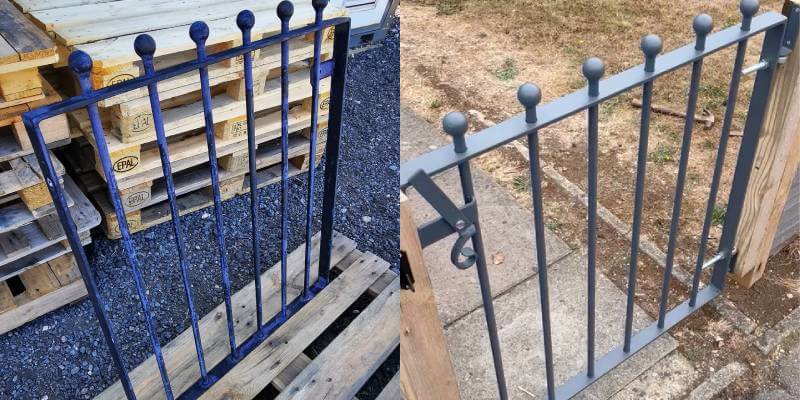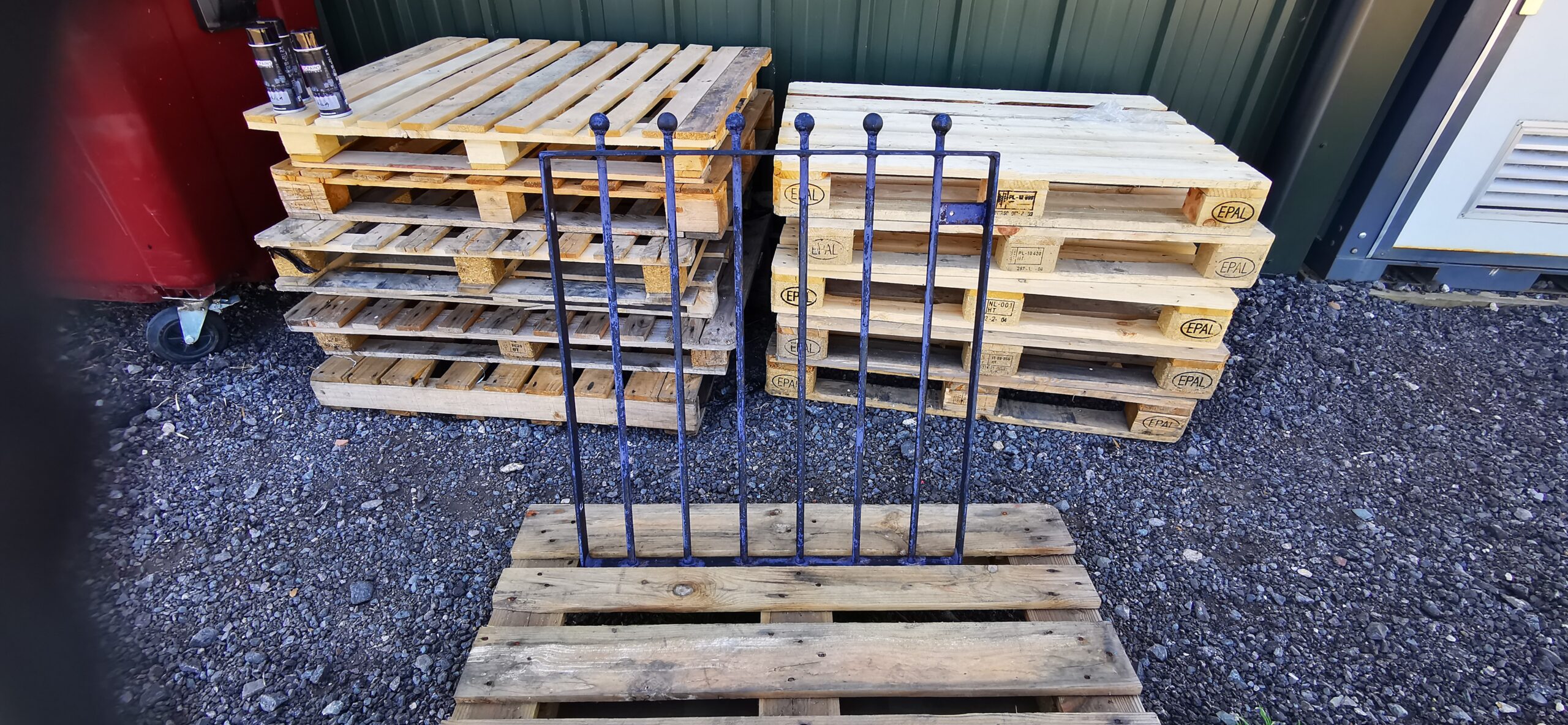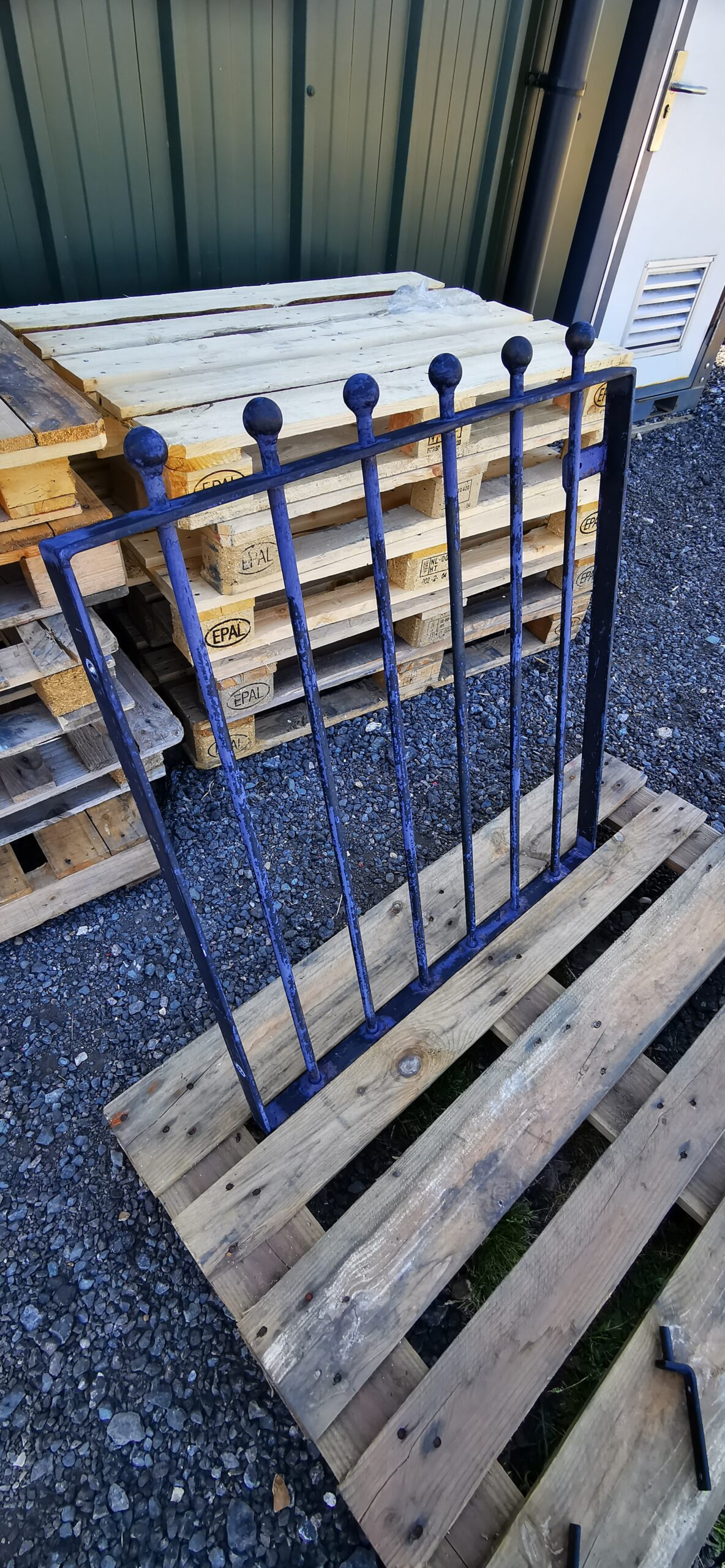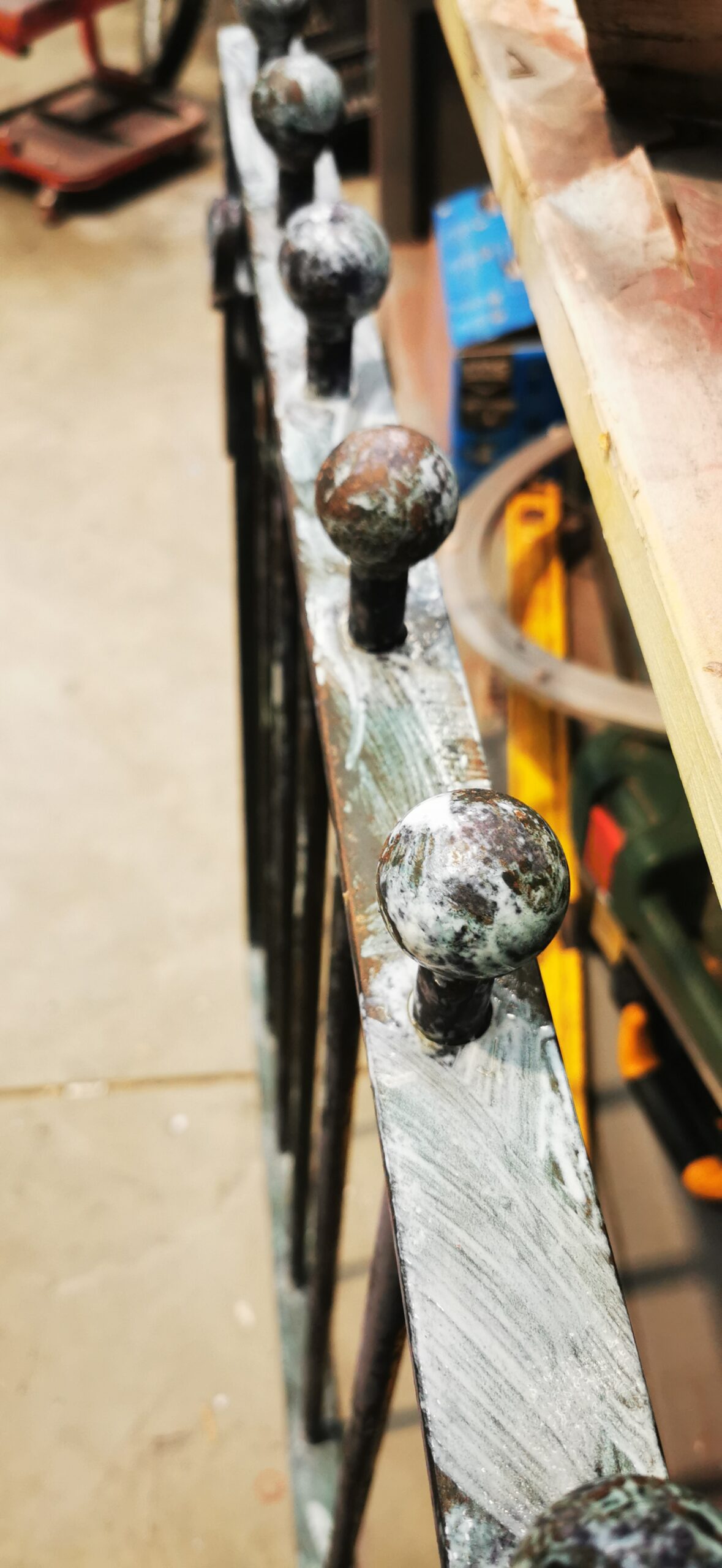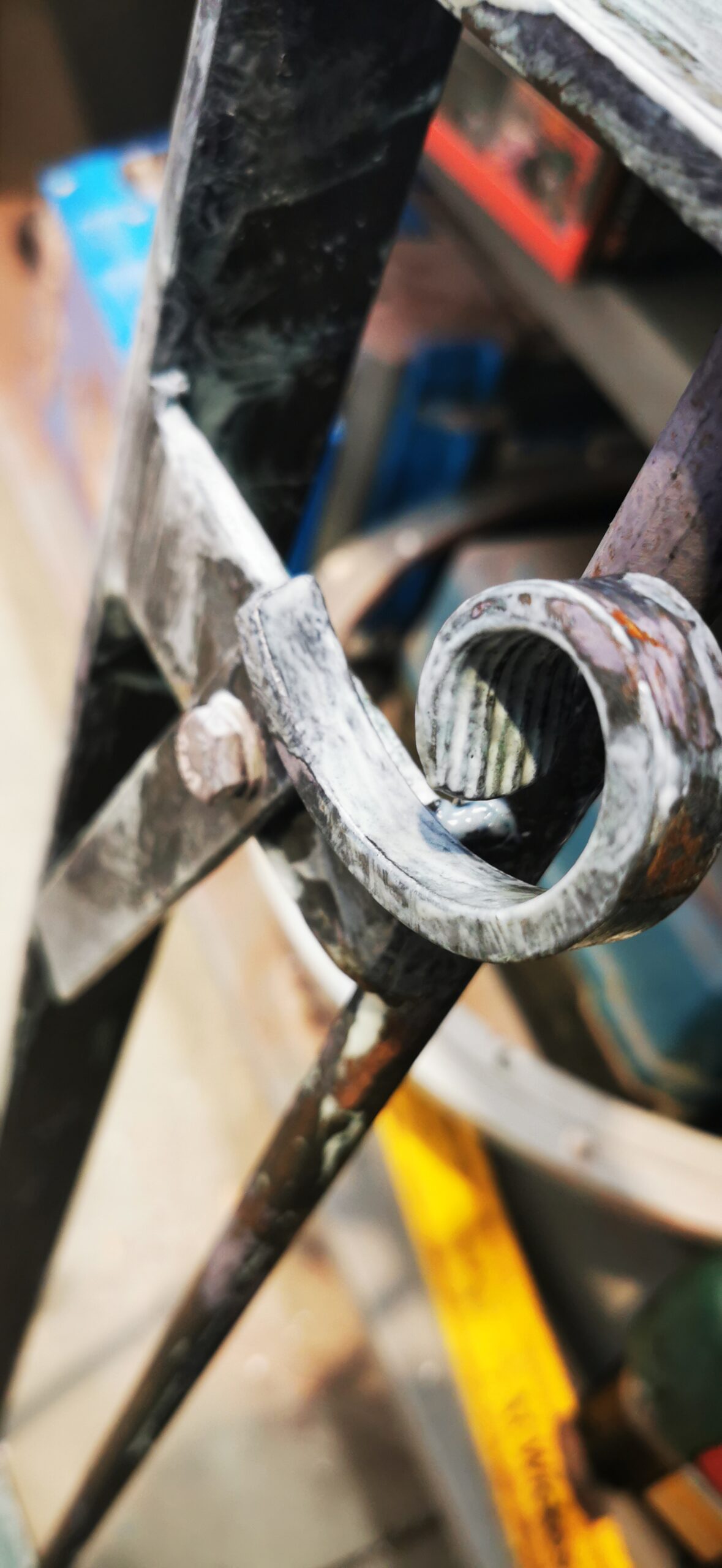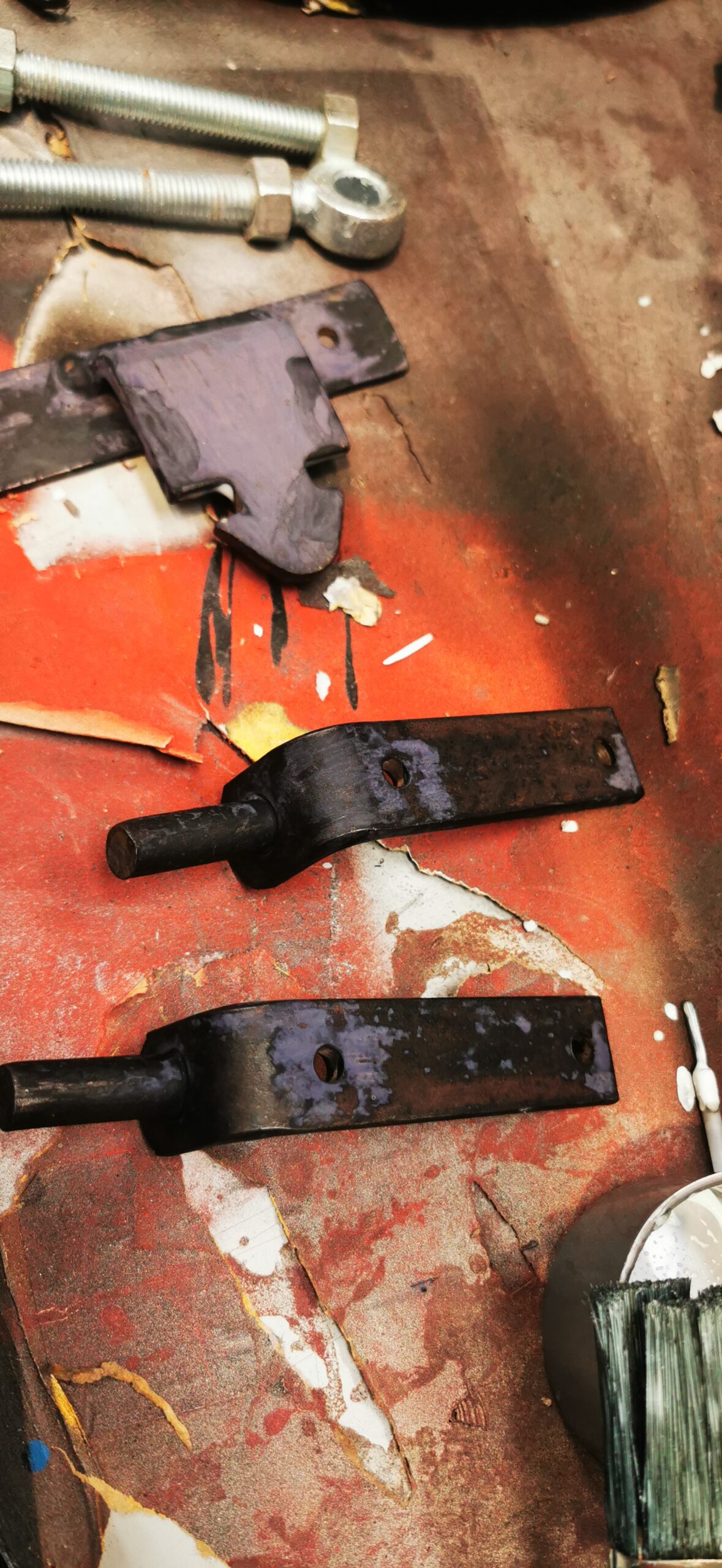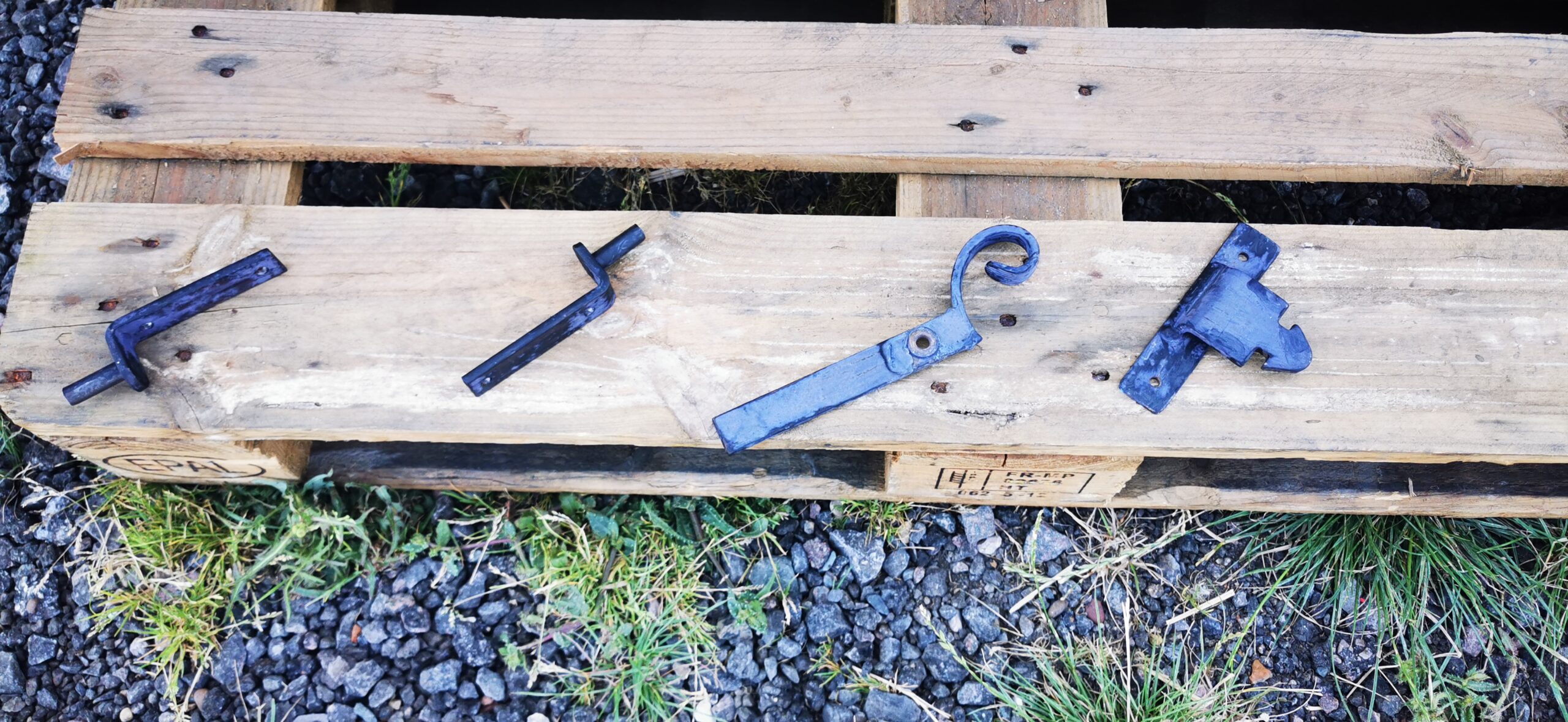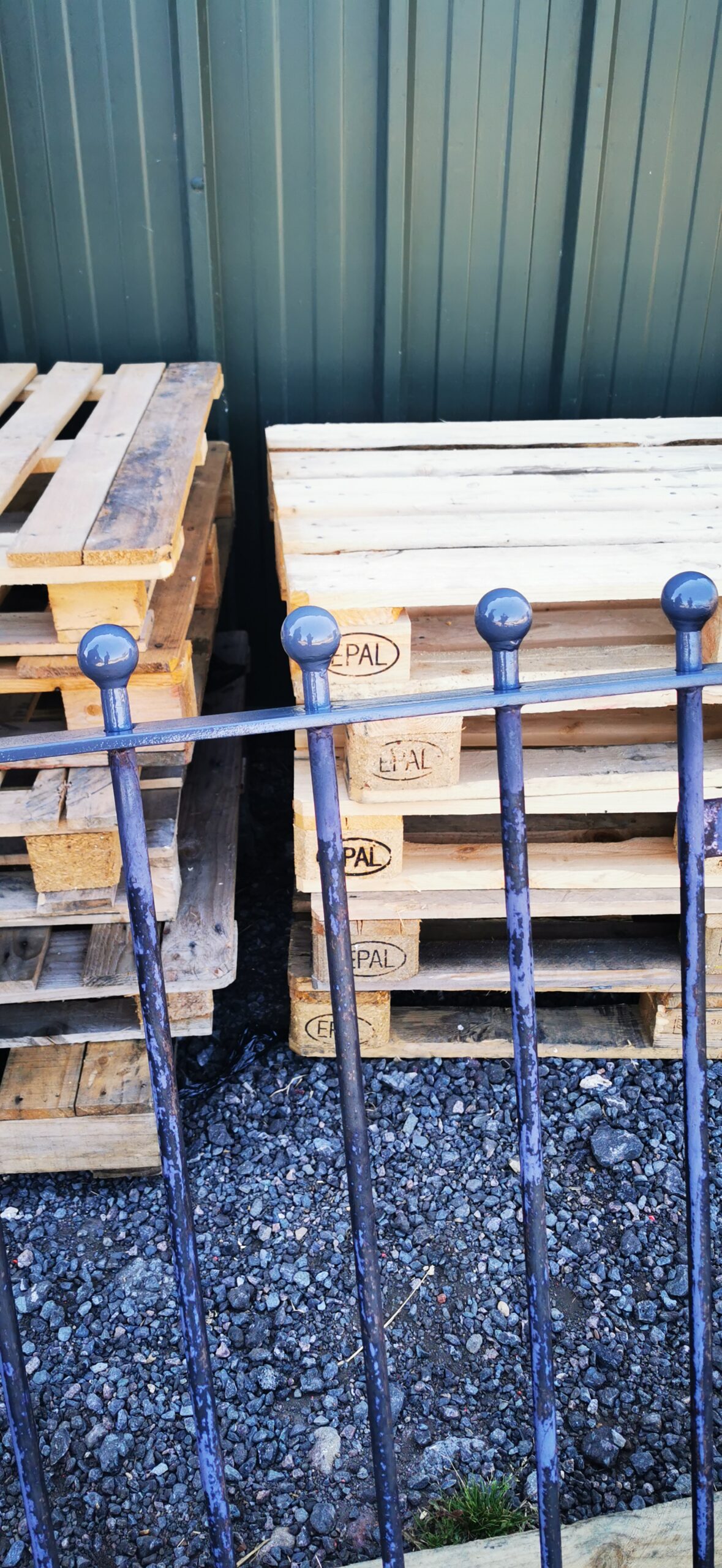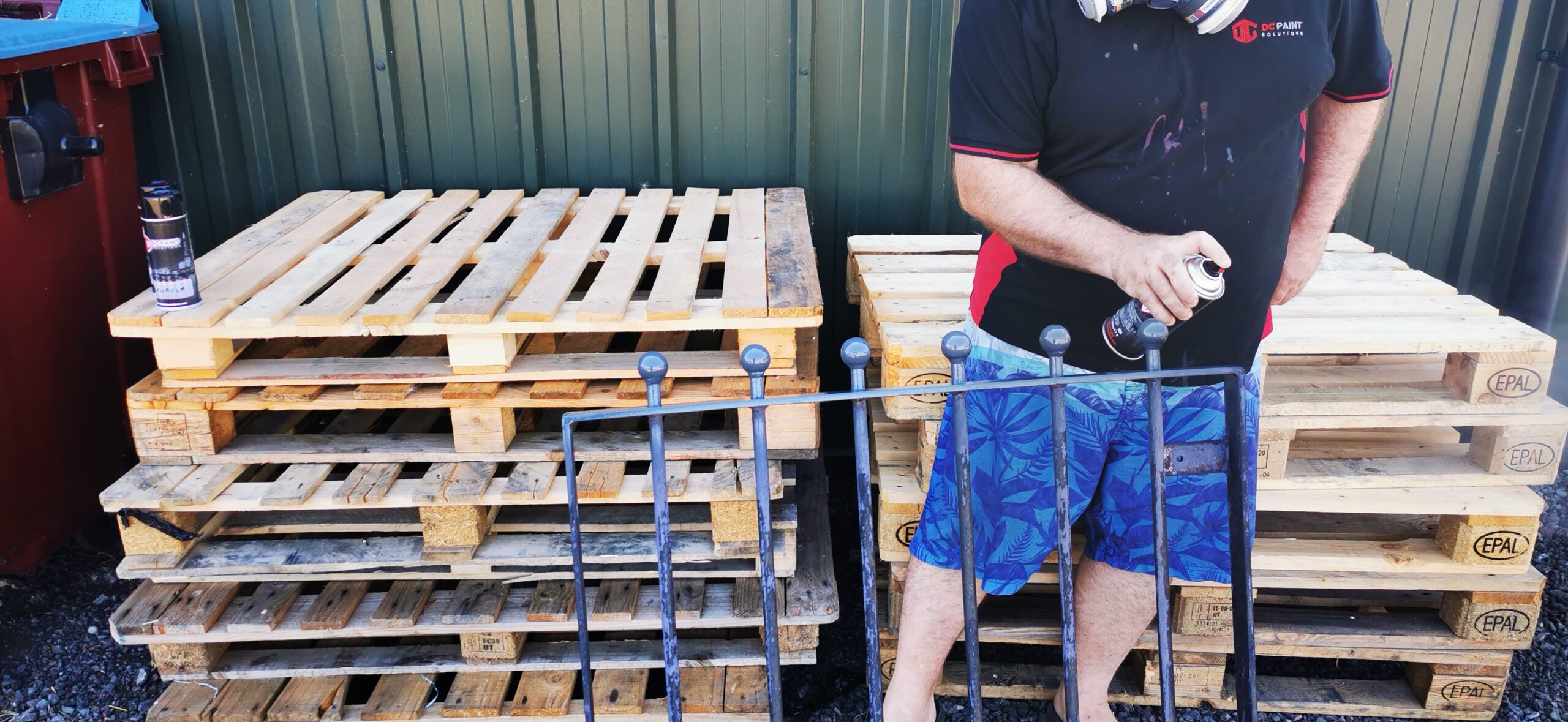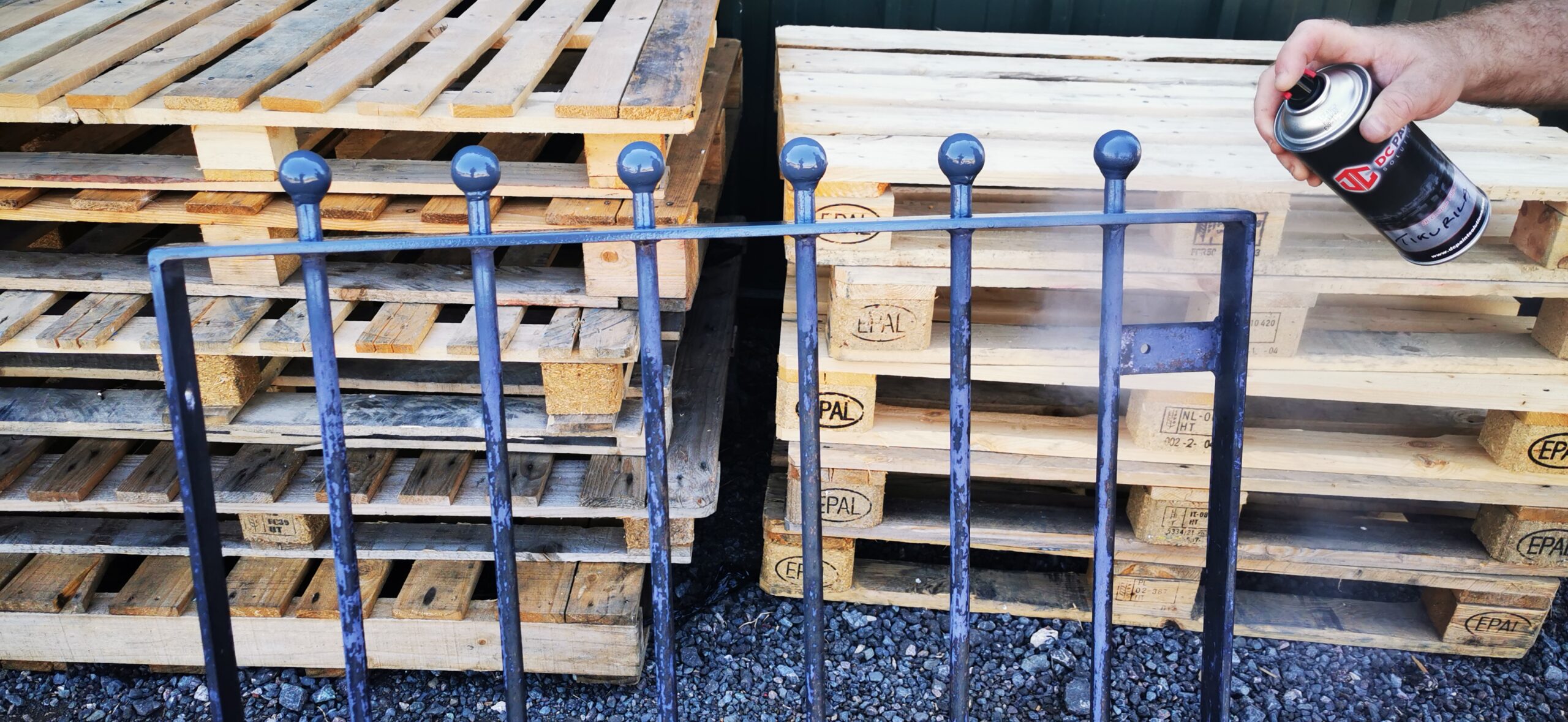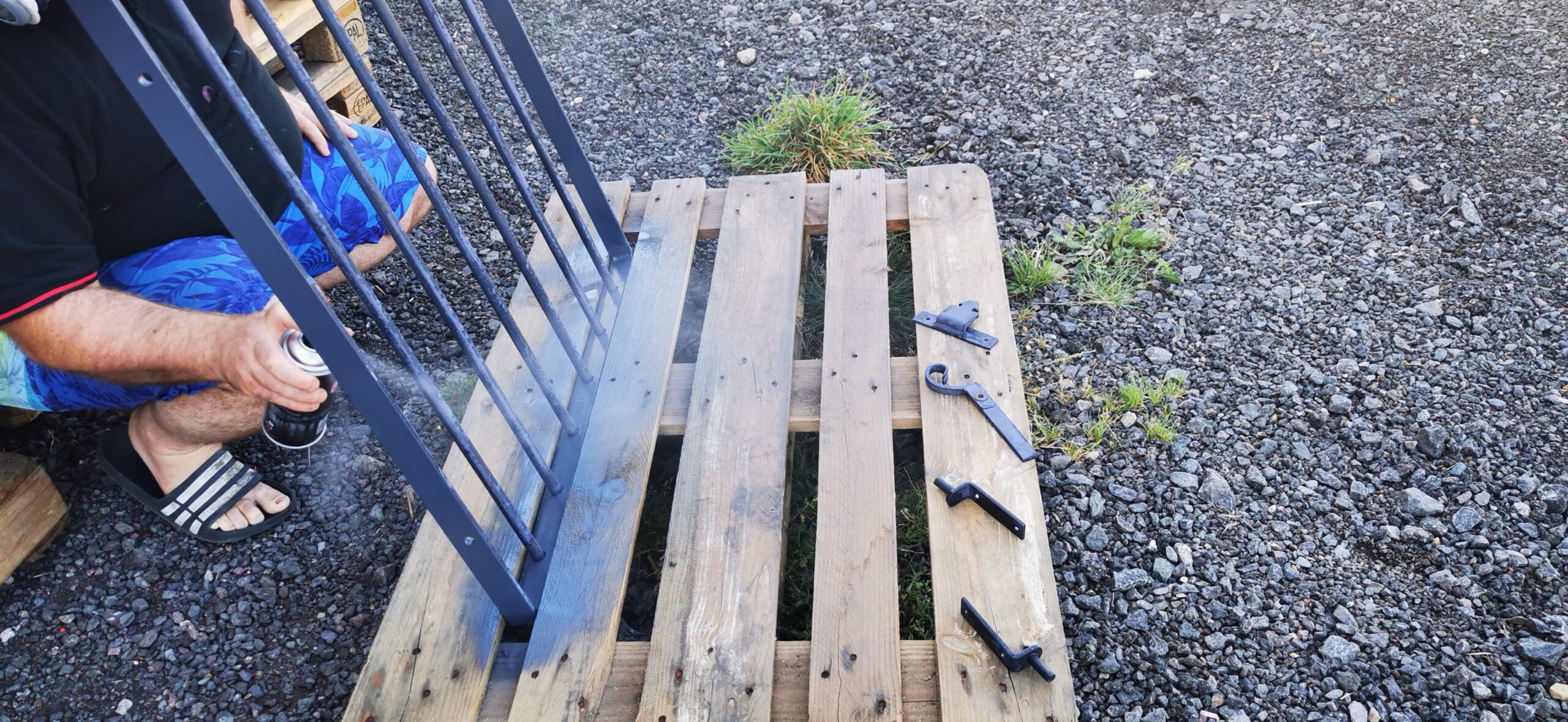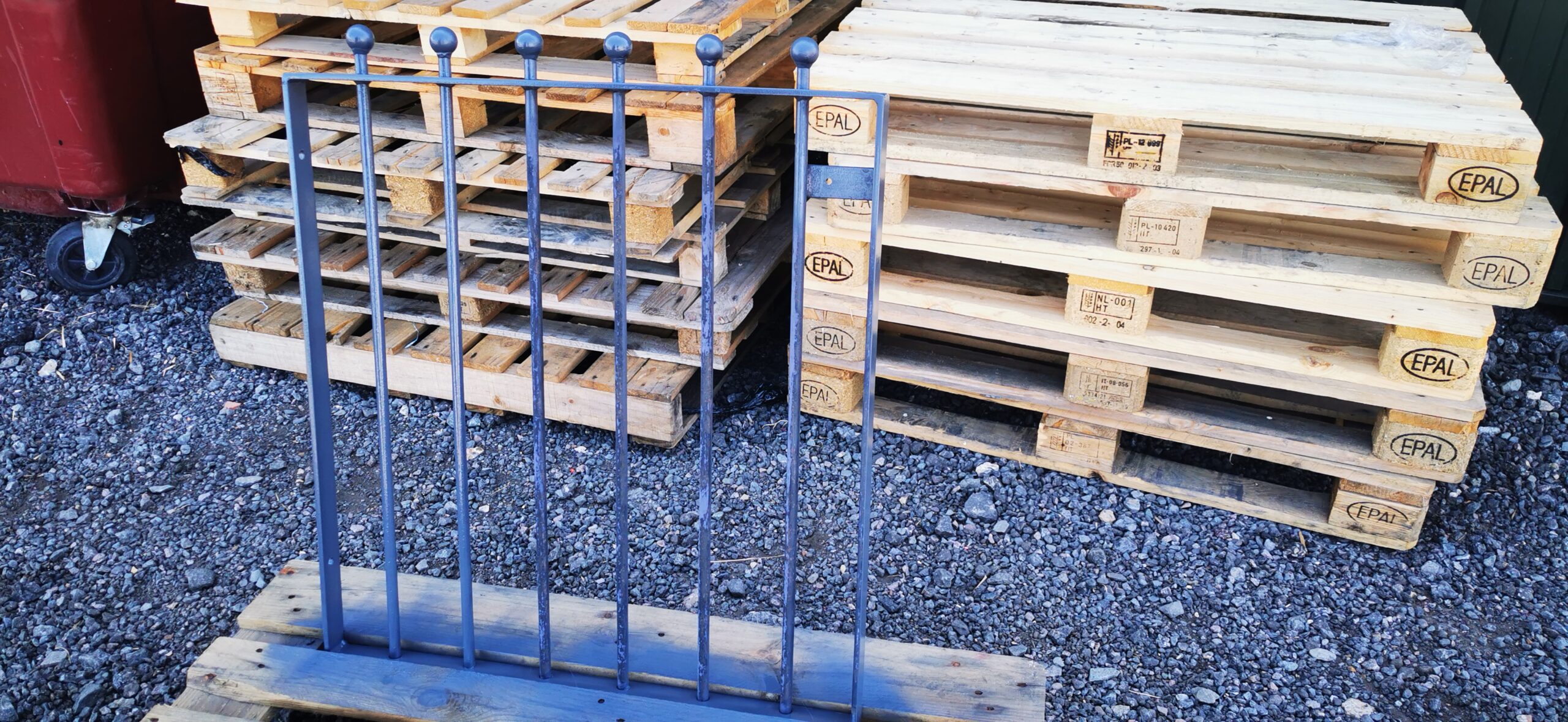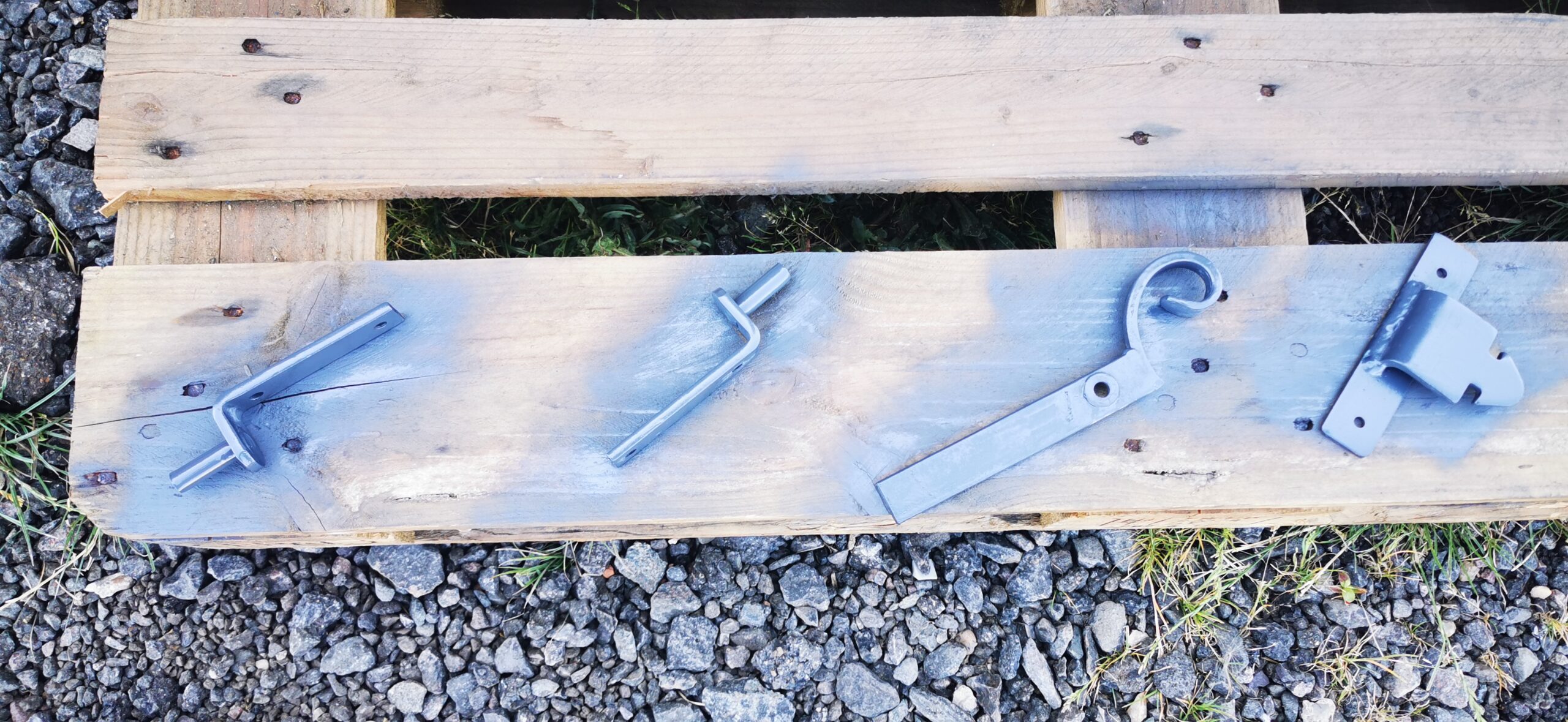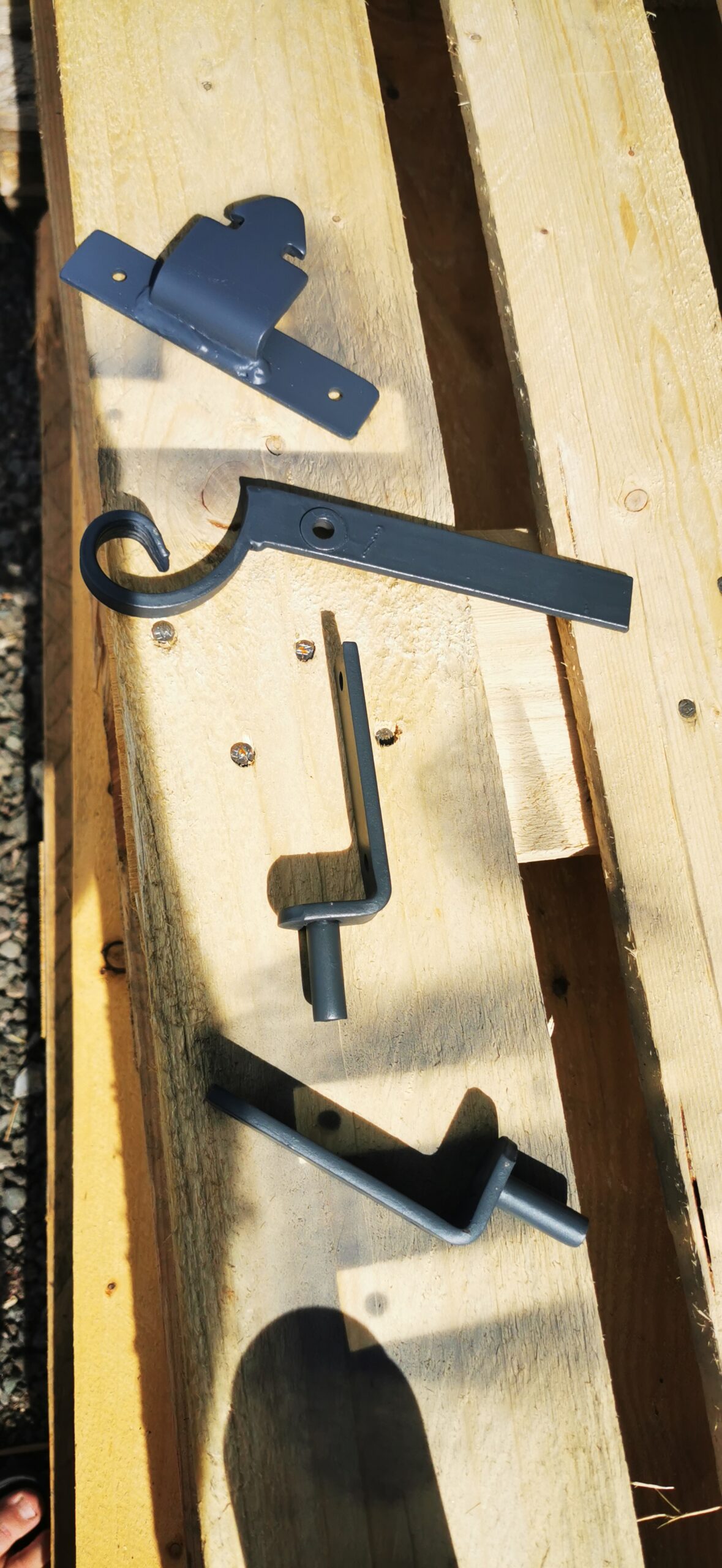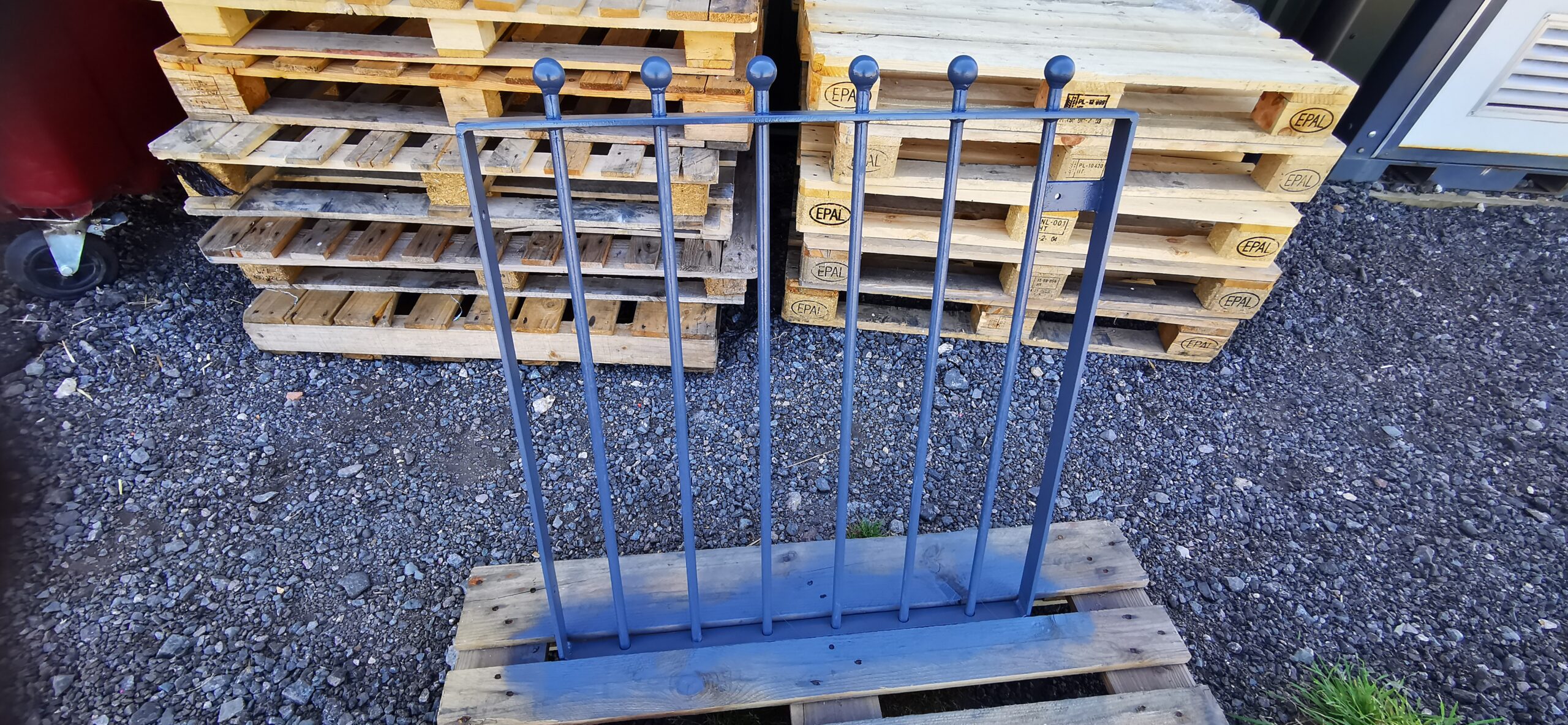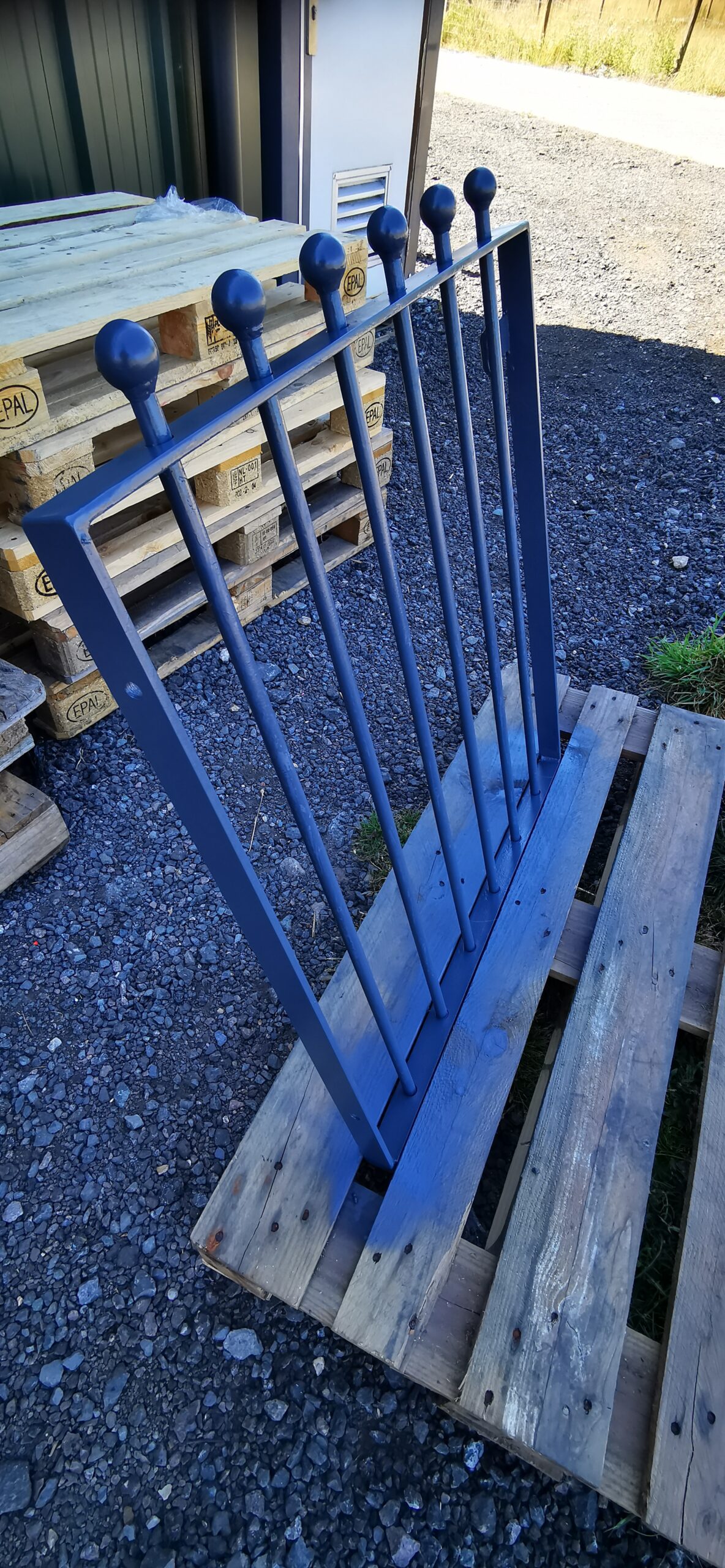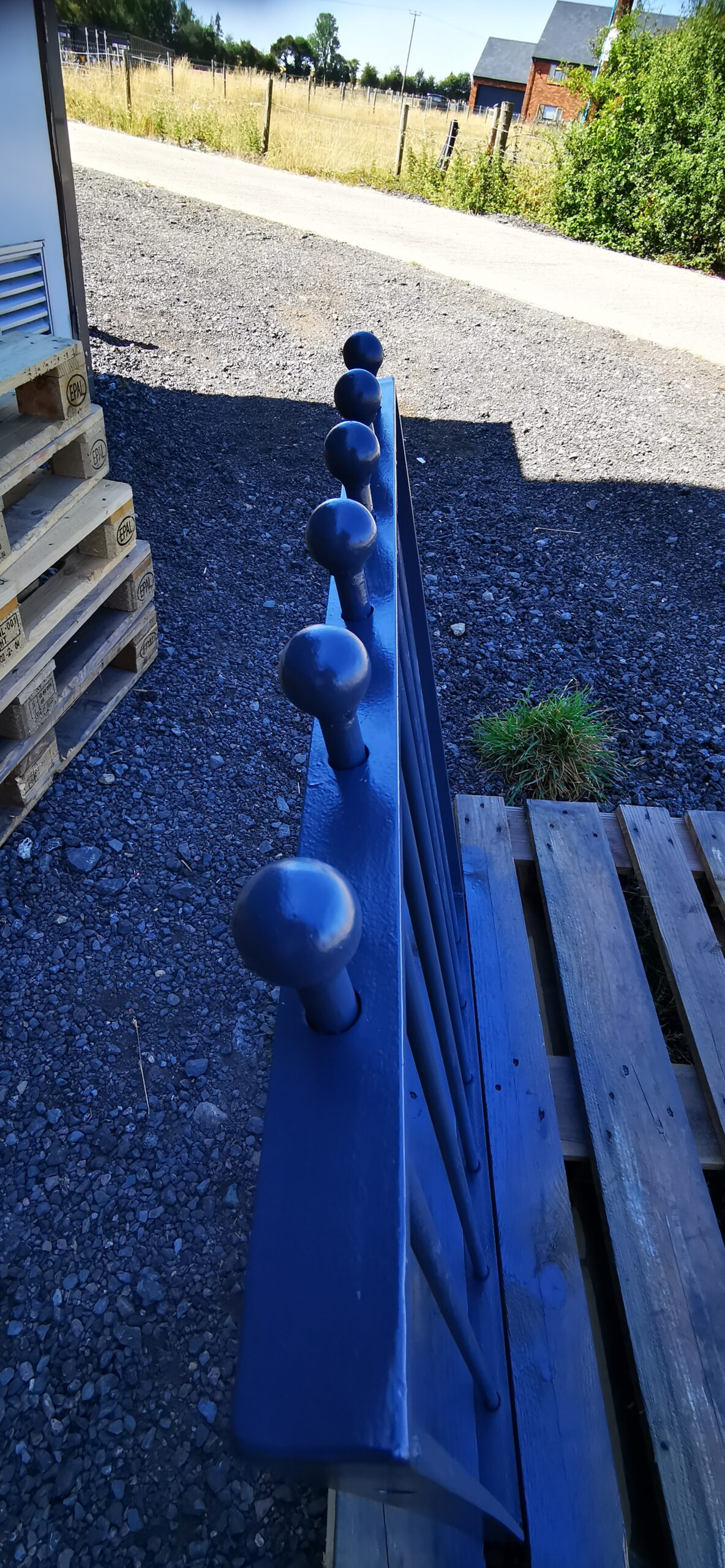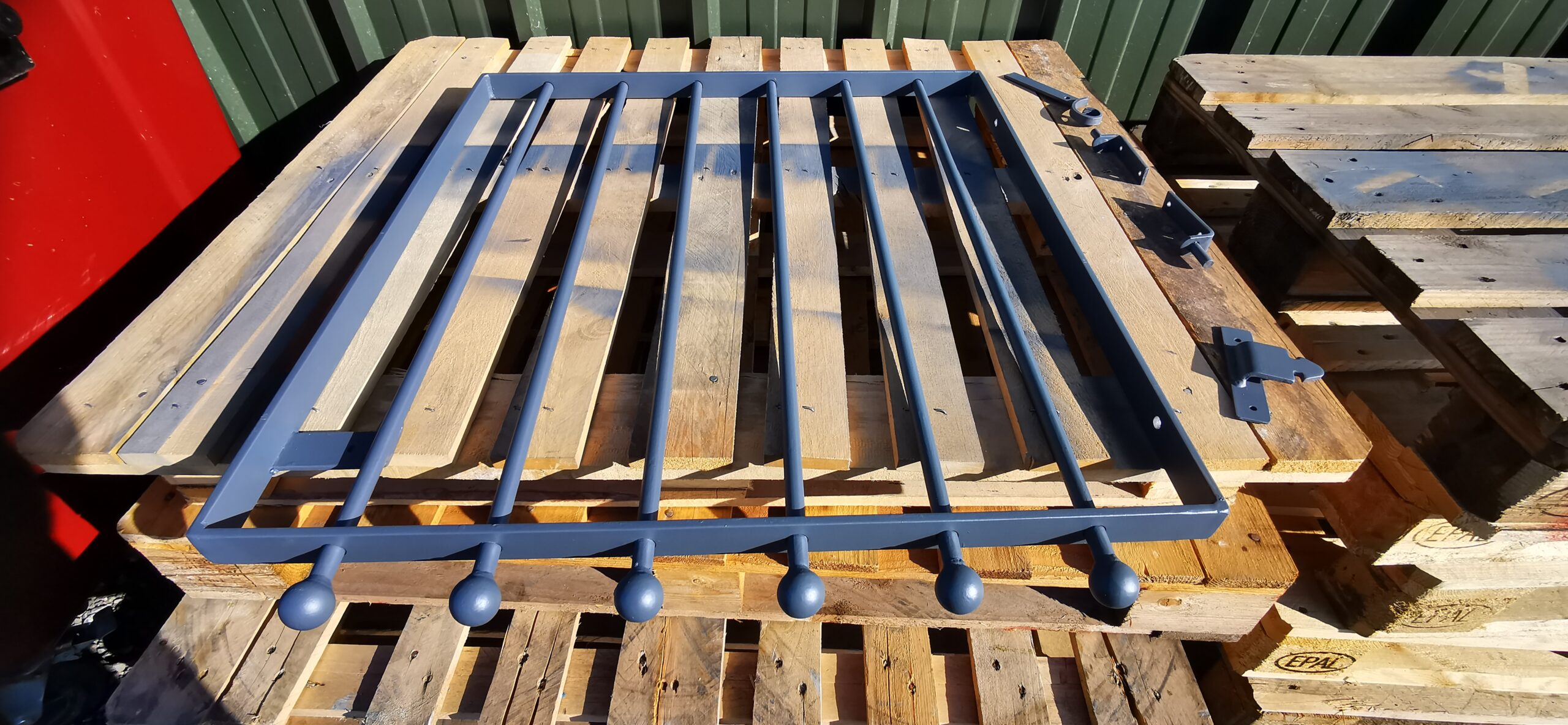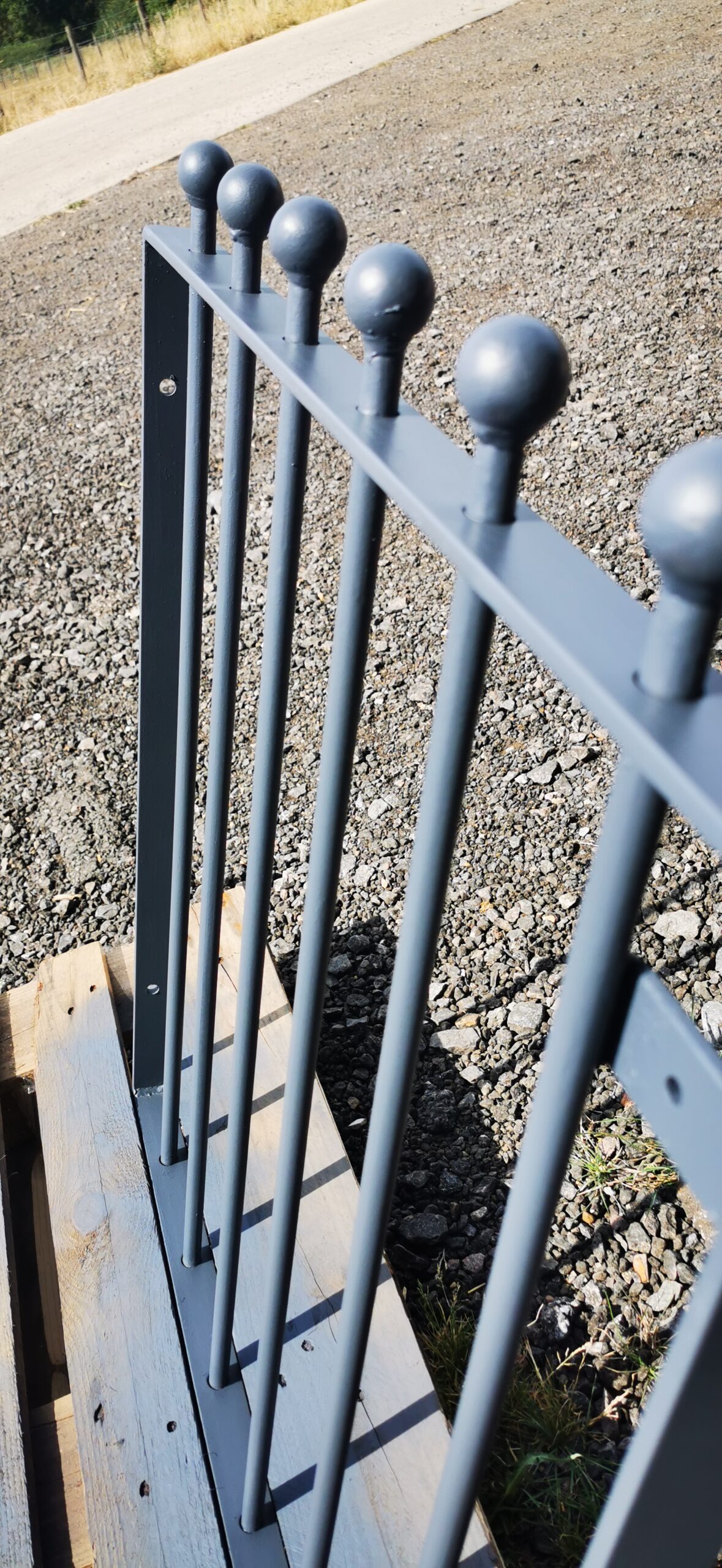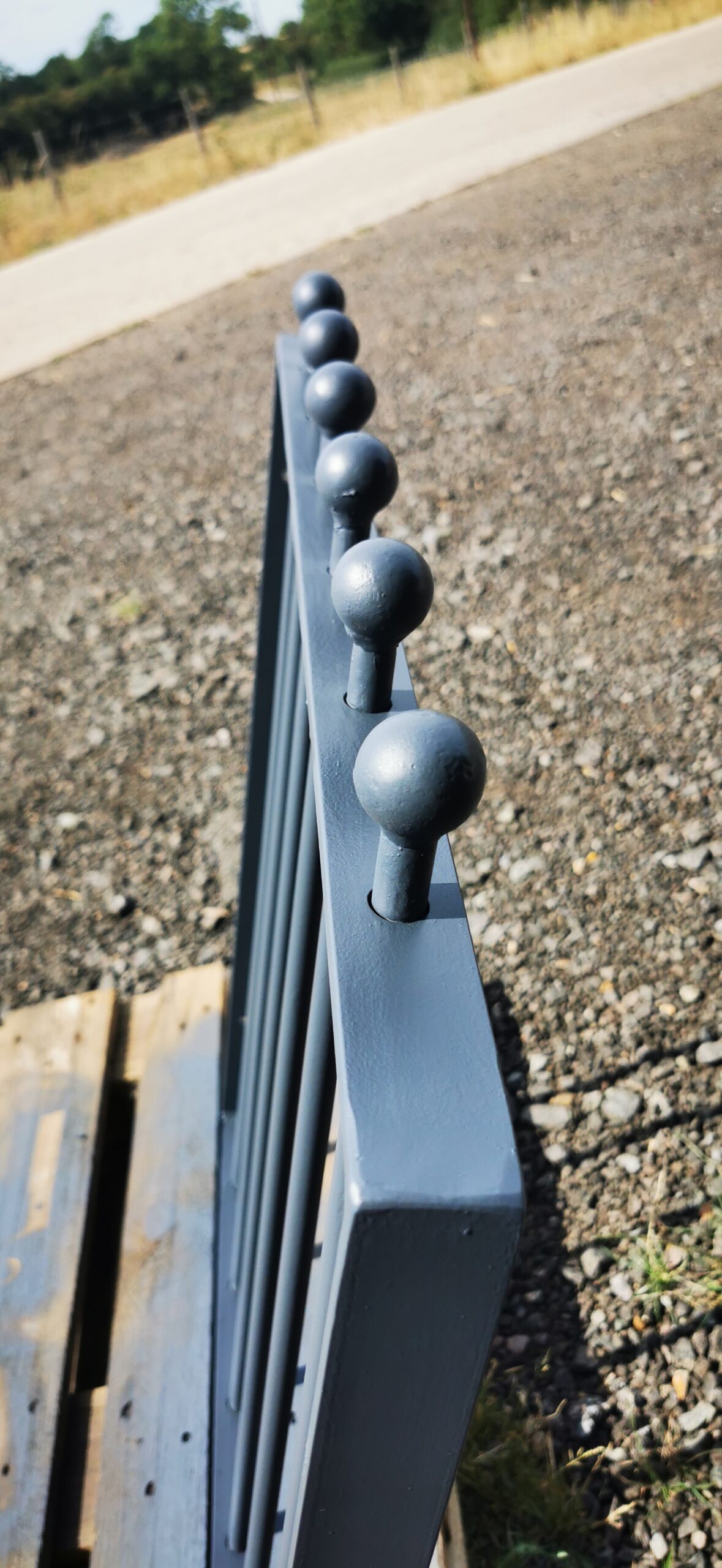Our customer, Matt, came to us with his dad’s old antique gate that was looking a little rusty and worn. It was the perfect opportunity to breathe some new life into it rather than replace it.
You can tackle a gate just like any other metal garden furniture, making it a cheap way to restore old garden metals. The results were fantastic, and here is how you can do the same from home!
Tool & Material List
- Dust sheets
- Wire brush
- Sanding paper and or sanding discs (for a dual-action sander if you have one)
- Degreaser
- Rust remedy/repair
- RAL 7001 HD/AC primer paint
Preparation
The most important step is the prep!
Begin by thoroughly cleaning the gate to remove any dirt and debris. Once dry, degrease the gate and remove any old oils or residues which will stop the paint from sticking. The next step is to de-rust your project.
TOP TIP: If you live anywhere near the coast and have any aluminium garden furniture, while it won’t rust (like iron), it can still oxidise. Although this is still a type of corrosion, it’s easier to deal with than iron rust, so we highly recommend removing all traces.
To de-rust the surface, start by taking a wire brush and remove any loose surface material or rust. The oxidised pitting is almost chalky, so most of it should come off with minimal effort. However, rust will take a little more investigating to see how deep it goes.
Ensure you take the time to remove all rust that has bubbled under the paint, returning it to metal. Then, wearing rubber gloves, scrub around the framework with the rust treatment.
Be mindful not to get any chemicals on any straps or fabrics (cushions should be completely removed where possible), as it could end up staining them. If the pitting is really deep, you can look at getting a metal filler and building the substrate level back up. Once the filler has cured, you can sand to an acceptable level.
For rust protection, there are a number of rust treatments and rust remedies you can purchase online which can chemically treat the rust. After treating it, you will notice the colour turns black or dark, which means it is now cured. Once fully cured and dry, you can sand it down to a smooth finish.
Ground Coat
Once the metal surface has fully dried and been sanded flat, we move on to the ground coat/primer. Using a primer with anti-corrosion properties will benefit you in the long run, preventing the treated surface from rusting or oxidising again.
When applying the primer, remember the trick is to only cover the project, not paint it in coats. The thinner the coat, the quicker it will cure. Typically, the primer should be touch dry within 20 minutes and suitable to paint over within 1-2 hours.
Base Coat Colour
When you are comfortable with the primed finish, you can apply your 1K or 2K base coat, depending on the project. Now, this is where things can be a little convoluted, so I will attempt to break it down for you.
A single-pack (1K base coat) colour is a non-hardened paint (for garden furniture, acrylic is the way to go); this will be fine and last for a while. However, at some point, it may wear down, especially if you don’t apply a lacquer to protect the paint.
The other alternative is to apply a HD/AC primer, which can act as your ground coat and the base coat. This is what we chose, and we went with the RAL 7001 colour.
The other option for painting your project is to purchase a 2K base coat. This will be a hardened finish and paint all in one, so it may remove the need for a final lacquer top coat. It’s also worth adding a UV additive where possible to reduce the possibility of sun bleaching.
Top Coat Lacquer
To seal and protect your paint, you can also add a lacquer. When it comes to anything outside in the elements, try to make it a 2 pack (2K top/clear coat) as this is a hardened finish, designed to tolerate a lot more weathering, abrasions and certain chemical properties. This will give you a much harder protective layer and bring depth to the final base coat colour.
To further maintain the final project, wash it regularly with warm water and a little washing-up liquid. Dirt and dust on the surface of iron can trap moisture against the paintwork, causing it to deteriorate and rust. To keep your iron furniture in good condition, always keep it clean.
Thanks for the project, Matt. We hope this helps and gives you something worthwhile to consider, but if you need any assistance or support, please call us on 01908 972 393.


